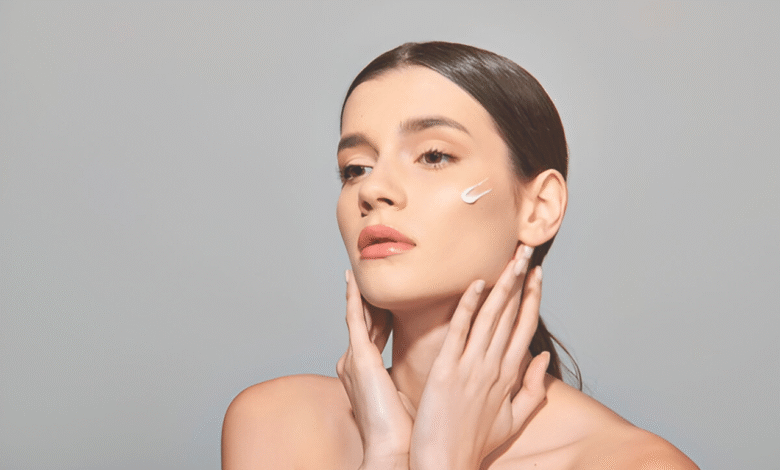2025’s Top Skincare Trends: What’s In and What’s Out
Skincare trends 2025 reveal AI beauty tech, microbiome care & sustainable solutions. Discover what's in blue light defense and out harsh exfoliants.

Skincare Trends in 2025 are set to revolutionize the way we care for our skin, blending cutting-edge science with eco-conscious innovation. As consumers become more informed and selective, the industry is shifting toward personalized, sustainable, and tech-driven solutions that deliver real results. From AI-powered skin diagnostics to biodegradable packaging, this year’s trends emphasize efficiency, environmental responsibility, and skin health like never before.
Gone are the days of one-size-fits-all routines and wasteful beauty habits. In 2025, the focus is on minimalist yet effective Skincare Trends, microbiome-friendly formulations, and protection against modern stressors like blue light pollution. Whether you’re a skincare enthusiast or just starting your journey, understanding these trends will help you make smarter choices for a radiant, healthy complexion in the years ahead.
2025’s Top Skincare Trends
Sustainable and Eco-Conscious Skincare
Sustainability is no longer just a buzzword it’s a necessity. In 2025, brands are prioritizing biodegradable packaging, refillable containers, and waterless formulations to reduce environmental impact. Consumers are increasingly opting for vegan skincare and cruelty-free products, pushing companies to adopt ethical sourcing and production methods. Ingredients like upcycled botanicals and ocean-safe sunscreens are gaining popularity, reflecting a shift toward eco-friendly beauty.
AI and Personalized Skincare
Artificial Intelligence is revolutionizing skincare by offering personalized Skincare Trends tailored to individual needs. AI-powered skin scanners and apps analyze skin conditions in real-time, recommending the best products and treatments. Brands are leveraging machine learning to create custom serums and moisturizers based on genetic and environmental factors. This tech-driven skincare approach ensures precision and effectiveness, making one-size-fits-all products obsolete.
Microbiome-Friendly Products
The skin microbiome is a hot topic in 2025, with research emphasizing the importance of balancing good bacteria for healthy skin. Prebiotic and probiotic skincare helps strengthen the skin barrier, reducing inflammation and breakouts. Products containing postbiotics and fermented ingredients are trending, as they enhance hydration and radiance. This shift marks a move away from harsh, stripping cleansers toward gentle, microbiome-supporting formulas.
Blue Light Protection
With increased screen time, blue light protection has become essential. Skincare Trends are introducing antioxidant-rich serums and mineral sunscreens that shield skin from digital aging caused by HEV light. Ingredients like niacinamide and Zinc oxide are being incorporated into daily routines to prevent hyperpigmentation and collagen breakdown. This trend highlights the growing awareness of tech-related skin damage.
Skinimalism
Less is more in 2025, as skinimalism continues to dominate. Consumers are simplifying their routines with multi-tasking products that combine hydration, SPF, and anti-aging benefits. The focus is on clean, minimal ingredient lists, reducing the risk of irritation and overloading the skin. This trend opposes the 10-step Korean Skincare Trends, favoring efficiency and effectiveness.
Non-Invasive Skin Tech
At-home non-invasive devices like LED masks, microcurrent tools, and ultrasonic scrubbers are surging in popularity. These gadgets offer salon-like results without downtime, making professional-grade skincare accessible. Red light therapy for collagen stimulation and cryo-facials for depuffing are among the most sought-after treatments in 2025.
What’s Out in 2025?
Over-Exfoliation
Gone are the days of aggressive physical scrubs and daily acid toners that compromise the skin barrier. In 2025, enzyme-based exfoliants and gentler chemical formulas take precedence, offering effective renewal without irritation or dehydration.
Single-Use Sheet Masks
The beauty industry is ditching wasteful single-use sheet masks in favor of reusable silicone masks and concentrated serums. Consumers now prioritize sustainable alternatives that deliver similar if not betterresults without environmental guilt.
Synthetic Fragrances
Sensitivity-aware shoppers are rejecting artificial fragrances linked to redness and inflammation. Instead, fragrance-free formulations and natural essential oils dominate, catering to reactive and allergy-prone skin types.
Comedogenic Oils
Thick, pore-clogging oils like coconut oil are being swapped for lightweight, non-comedogenic alternatives such as squalane and hemp seed oil. The focus is on hydration that breathes, rather than suffocates, the skin.
Generic Skincare
Mass-market products with blanket claims are fading as customized skincare rises. Brands now leverage AI and skin diagnostics to create personalized serums and moisturizers tailored to individual concerns and genetics.
Alcohol-Based Toners
Harsh astringent toners loaded with drying alcohols are being replaced by pH-balancing toners with hydrating ingredients like hyaluronic acid and probiotics. The goal? Nourish never strip the skin.
Unrealistic Beauty Standards
The era of airbrushed perfection is over. Consumers now embrace real skin textures and advocate for inclusive marketing that celebrates acne, wrinkles, and hyperpigmentation flaws and all.
Challenges of Adopting 2025’s Top Skincare Trends
High Costs of Advanced Skincare Technology
While AI-powered diagnostics and personalized skincare offer revolutionary benefits, their premium pricing creates accessibility issues. Many consumers may struggle to afford at-home skin scanners or custom-formulated products, widening the gap between luxury and mainstream Skincare Trends.
Greenwashing in Sustainable Beauty
As eco-conscious Skincare Trends grows, some brands engage in misleading “green” marketing without real sustainability efforts. Consumers face difficulty identifying genuinely biodegradable packaging or clean formulations amid exaggerated claims.
Overwhelming Product Choices
The rise of skinimalism clashes with an ever-expanding market of multi-tasking products, leaving consumers confused about what they truly need. Paradoxically, simplifying routines becomes complicated when faced with endless “must-have” innovations.
Regulatory Gaps in Microbiome Skincare
The booming prebiotic and probiotic Skincare Trends lacks standardized regulations, making it hard to verify product efficacy. Without clear guidelines, some formulas may overpromise on microbiome benefits without clinical proof.
Tech Overload in Daily Routines
While LED masks and microcurrent devices offer salon-like results, integrating too many gadgets can lead to skincare fatigue. Users may abandon complex tech routines due to time constraints or inconsistent results.
Misinformation About Blue Light Protection
Despite growing demand for HEV light defense, myths persist about its necessity. Some brands exploit fears by marketing unnecessary products, while others underestimate true digital aging risks, leaving consumers misinformed.
Cultural Resistance to Skin Positivity
Though real skin representation gains traction, societal pressure for perfection persists. Brands promoting unfiltered beauty still face backlash, slowing progress toward inclusive standards in Skincare Trends.
Read More: How to Balance Cardio and Strength Training for Optimal Results
Conclusion
Skincare trends in 2025 mark an exciting shift toward smarter, more sustainable beauty practices that prioritize both skin health and environmental responsibility. From AI-powered personalization to microbiome-balancing formulas, this year’s innovations prove that effective skincare doesn’t have to be complicated or wasteful. As consumers continue to demand transparency and science-backed solutions, the industry is leaving behind outdated practices like harsh exfoliants and single-use products in favor of clean, efficient, and eco-conscious alternatives.
Looking ahead, one thing is clear the future of skincare is all about balance, customization, and innovation. Whether you embrace skinimalism, invest in blue light protection, or explore at-home skin tech, adapting to these trends ensures your routine stays ahead of the curve. By aligning with these evolving standards, you’re not just nurturing your skin you’re contributing to a more sustainable and tech-forward beauty industry. Skincare in 2025 is smarter, greener, and more personalized than ever before and your complexion will thank you for it.
FAQs
What is the biggest Skincare Trends in 2025?
AI-powered personalized skincare is leading the industry, offering customized routines based on real-time skin analysis.
Are natural ingredients still popular in 2025?
Yes, but with a focus on scientifically backed botanicals and fermented extracts for better efficacy.
Is the 10-step Skincare Trends still relevant?
No, skinimalism is replacing lengthy routines with multi-functional products for simplicity and efficiency.
How can I protect my skin from blue light damage?
Use antioxidant serums and mineral sunscreens with zinc oxide to block HEV light.
What skincare ingredients should I avoid in 2025?
Avoid synthetic fragrances, comedogenic oils, and harsh physical exfoliants in favor of gentler alternatives.









